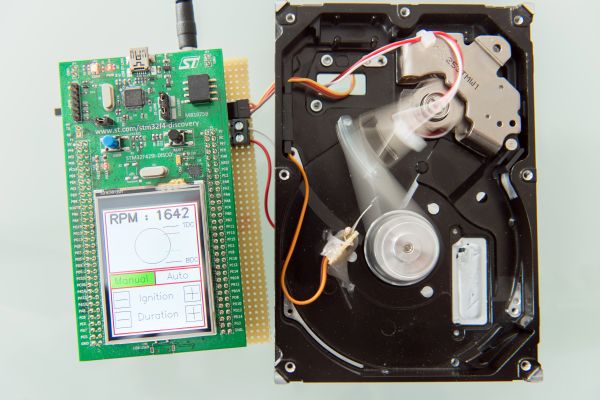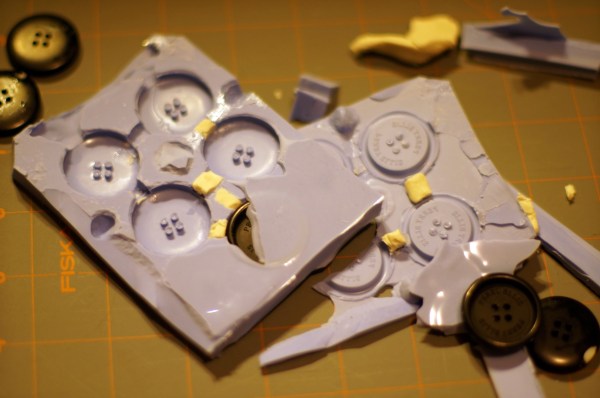[Fabien-Chouteau] submitted his interesting solenoid engine. In an internal combustion, steam, or pneumatic piston engine, the motive force is produced by expanding gas. In [Fabien]’s little engine it is produced by the arm of a hard drive. Solenoid engines are usually just for show, and come in all shapes and sizes. If you want to move something using electricity an axial motor is probably a better bet. But if you want a challenge and a learning experience, this is hard to beat.
[Fabien] had some problems to solve before his motor made its first revolution. Just like a piston engine the timing needed to be exact. The arm firing at the wrong time could cause all sorts of trouble, the equivalent of backfire in a combustion engine. A STM32f4 discovery board was coupled with a Hall-effect sensor and a MOSFET. When the board read that the arm has moved back to the most efficient position for firing it sent a pulse through the coil. Just like a regular engine, getting the timing right makes all the difference. Once [Fabien] got it tuned up his motor could spin around at a steady 3000 rpm.
Continue reading “Software Controlled Hard Drive Solenoid Engine”



















